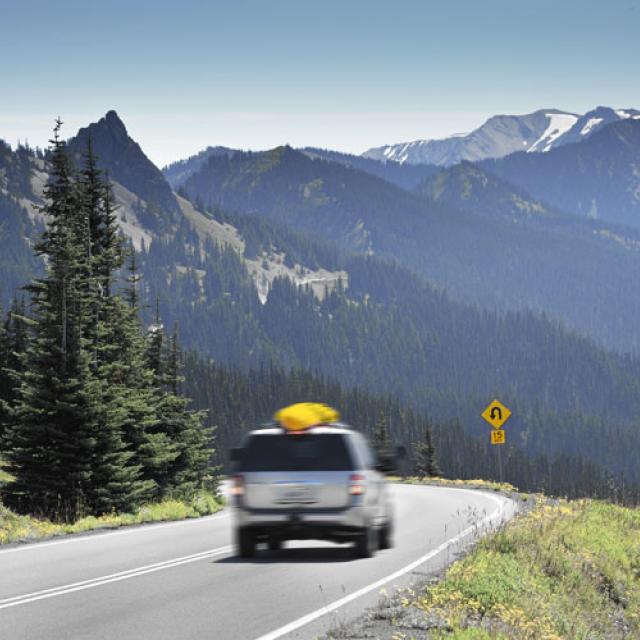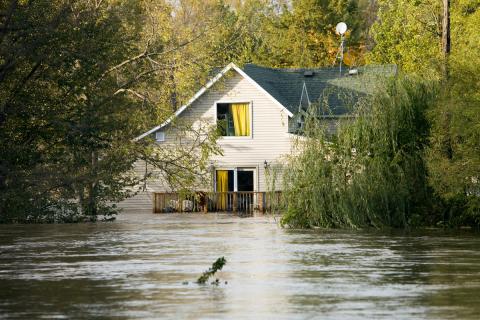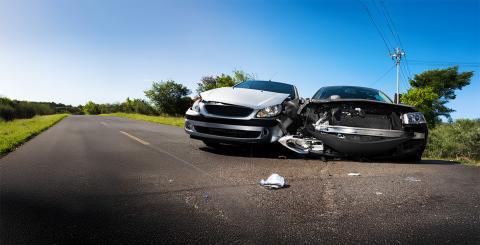Road trip U.S.A.: two golden rules for peace of mind

Planning a car trip to the United States this summer? Good idea! Hitting the highway for your holidays gives you the freedom to follow your fancy wherever it takes you. But before you set forth into the land of Uncle Sam, there are a few basic precautions it’s important to take.
And because we’re there making your life a little simpler, we’ve boiled it all down to two golden rules for peace of mind on your road trip.
RULE #1: A CAR IN ORDER WITH ITS PAPERS IN ORDER
Make sure your car is just as ready for the trip as you are. And have all the travel documents you need for every member of the family, including any pets along for the ride.
Your car
You’ll be depending on your car, so make sure it’s up to the task. If you have regular maintenance coming up, make an appointment and get it done before you leave.
The following merit special attention for safe driving:
- Tires – Never drive on worn-out tires. Check pressure and wear for each tire, and compare both tires on each axle. If one seems more worn than the other, it could indicate misalignment. And don’t forget to check the spare tire and tire change kit.
- Shocks – There’s more to your tires’ grip on the road than tread wear. Shock absorbers make a big difference to your car’s ability to turn and stop, so make sure they’re in peak form. What you’re carrying factors in as well—a fully loaded car is more work for your shocks.
- Brakes – The added weight of all your family’s gear makes it harder to slow your vehicle down, so make sure your brake pads are up for it. If you feel vibration when braking, it could be a sign that you need to replace or repair your brake pads or rotors. Get your brake fluid checked too.
- Fluids – Speaking of fluids, your car depends on several fluids to run properly. When was your last oil change? Is your oil level where it should be? Coolant, transmission fluid, and windshield-wiper fluid should all be checked and topped up as well.
- Bike and other carriers – If you’re carrying your or your children’s bikes, make sure you have the right kind of bike carrier, bearing in mind that the roof is considered the best place for it. The same goes for roof racks for windsurfing boards, extra baggage, or whatever. Invest in the best and obey the weight limit stated in the user’s guide.
The papers
Make sure everyone in the car has all the required documentation and that it’s all up to date—passports, birth certificates, health insurance cards, driver’s licences, registration, and insurance. If you’ve brought Fido along, he’ll need his vaccination record. Photocopy your documents too, in case they’re lost or stolen.
RULE #2: THE INSURANCE COVERAGE YOU NEED
Never enter the United States without the right insurance. Civil liability is particularly important, since a lawsuit can end up costing a small fortune.
Car insurance
Car insurance issued in Québec protects you outside the province, within the limits of the options you’ve chosen. But the minimum civil liability coverage of $50,000 allowed here is nowhere near enough in the United States. We recommend at least $2 million in coverage. You do not want to have to pay the kinds of damages that may be ordered.
Who covers what when you have an accident in the U.S.?
Your car insurance covers damage to your vehicle, within the limitations provided for by the options you’ve chosen. Material and physical damage you cause to others falls under the civil liability coverage provided by your car insurance policy. If you’re a Québec resident, SAAQ (Société de l’assurance automobile du Québec) covers you for injuries sustained in a traffic accident, even if the accident occurs in the United States.
Travel insurance
Take out travel insurance to cover medical fees and hospitalization that RAMQ doesn’t.
And please feel free to get in touch with your insurance agent to check if you have the right coverage. You can also look into other protection you might want—for example, an endorsement that covers accommodation and transportation costs after an accident if you have to wait to get your car back.
That’s all for now. Happy trails!




